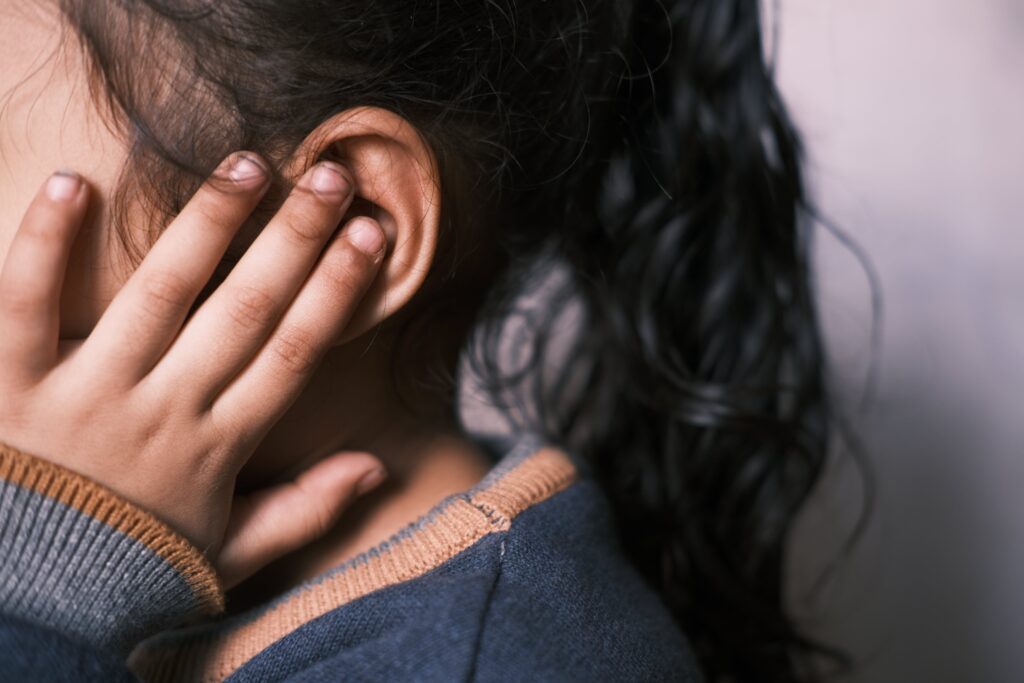The intricate nature of the human sensory system is a marvel in itself. With eight unique senses working simultaneously to provide a comprehensive understanding of our environment, the harmony in their function becomes paramount.
Within this context, Sensory Processing Disorder (SPD) emerges as a crucial topic of exploration. Gaining insights into all eight senses, and how they can be affected by SPD, helps us grasp the depth of experiences that your child may feel if they have this condition.
Having a profound comprehension of these senses not only equips us with knowledge, but also fosters empathy and a genuine understanding of the world from your child’s perspective. So, let’s jump right into all things SPD, and catch you up to speed on what all this means for your child.
What is Sensory Processing Disorder (SPD)?
Sensory Processing Disorder, often referred to as SPD, is a condition where the brain struggles to receive, organise, and respond effectively to sensory information.
When we interact with the world around us, our sensory system is hard at work processing a myriad of sensory input. However, in children with SPD, the way their brain interprets this sensory stimuli can differ from typical sensory processing.
This divergence often leads to noticeable signs, such as an excessive reaction to touch or a struggle with body awareness. Some common symptoms in children might include sensory overload, difficulty in balancing, or being overwhelmed by noisy environments.
The Traditional Five Senses

Sight (Visual)
The visual system, the first of our eight sensory systems, plays a pivotal role in how we perceive the world. Children with sensory processing disorders might experience challenges related to light sensitivity, making bright environments uncomfortable. Difficulty tracking objects is another concern, which can make tasks like reading or catching a ball more challenging.
However, there’s hope. By engaging with an occupational therapist, families can learn activities and strategies tailored to support visual processing. Simple modifications, such as using dimmer switches or employing visual tracking games, can make a significant difference.
Hearing (Auditory)
Challenges within the auditory realm can range from hypersensitivity to struggles with filtering out background noise. Imagine it as feeling overwhelmed in a bustling café, or struggling to focus on a conversation because every distant sound captures your attention.
Recognising these sensory processing difficulties is the first step in seeking help for your child. From there, therapeutic interventions, guided by knowledgeable professionals, can provide a range of support strategies. These might include noise-cancelling headphones for loud environments or specific listening exercises to hone auditory skills.
Taste (Gustatory)
Our gustatory system, which is responsible for taste, can become a point of contention for children with SPD. Some might display aversions to certain textures or flavours, leading to a limited diet consisting only of what they deem “safe” foods.
To address this, it’s essential to diversify food exposure gradually. Occupational therapists can offer strategies, helping families introduce varied textures and flavours in a manner that builds tolerance without overwhelming the child’s sensory system. Through patience and understanding, we can create a more inclusive and comfortable dining experience for all.
Smell (Olfactory)
Our olfactory system provides us with the ability to detect and interpret smells. For some individuals, challenges arise in the form of over-sensitivity to certain scents, making daily environments overpowering and, at times, unbearable. On the other hand, under-sensitivity can lead to a lack of awareness of essential signals, such as the smell of something burning.
Understanding these challenges is crucial. For managing olfactory challenges, one approach is to gradually introduce and desensitise your child to problematic scents. Additionally, we can create environments that respect and accommodate an individual’s olfactory needs, such as using unscented products or ensuring proper ventilation.
Touch (Tactile)
The tactile system is the means by which we interpret touch sensations. However, for some, this sensory input can be fraught with difficulty. Discomfort with certain materials, like wool or synthetic fabrics, can lead to a strong aversion to them. For others, the mere act of touch — whether from another person or an object — can be challenging.
Recognising that your child is struggling with these challenges is half the battle. Touch-based therapies can play a pivotal role in addressing these tactile sensitivities. By engaging with these therapeutic interventions, we offer individuals the opportunity to explore and understand their tactile boundaries, fostering a sense of safety and comfort.
The Lesser-Known Senses

Proprioception (Sense of Body Position)
The understanding of our body’s position in space hinges on our proprioceptive abilities. Muscles, tendons, and joints contribute to this sensory input, sending signals to our nervous system about our body’s orientation and movements.
However, for some, this communication isn’t as seamless. Challenges can manifest as clumsiness, difficulty in gauging force, or even writing with uneven pressure. Recognising these challenges in your child provides an avenue for improvement.
To enhance proprioceptive understanding, activities like weight-bearing exercises, resistance activities, or even certain forms of therapeutic massage can be beneficial. By incorporating these into daily routines, we can help your child gain better body awareness and control.
Vestibular (Sense of Balance)
Central to our sense of balance is the vestibular system, situated in the inner ear. This system provides crucial feedback about our spatial orientation, helping us navigate our surroundings with grace and coordination.
However, for some, this system doesn’t function optimally. Challenges can range from feelings of dizziness to pronounced difficulty with coordination, or even an intense fear of movement. But with every challenge comes an opportunity for growth.
By exploring vestibular-boosting exercises — like balance activities, swinging, or specific head movements — guided by trained professionals, your child can gradually reinforce their vestibular system. In doing so, we open the door to improved coordination, balance, and an enhanced quality of life.
Interoception (Internal Sensations)
Interoception is a crucial sensory system that informs us about our body’s internal states. It’s this sense that helps us recognise feelings of hunger, thirst, or the urgency to use the bathroom.
However, some individuals face challenges with their interoceptive senses. Struggles might manifest in diverse ways, such as difficulties with toilet training or not being attuned to hunger cues, leading them to potentially overeat or skip meals.
To address these challenges, it’s essential to develop strategies that heighten interoceptive awareness. Activities such as mindful body scanning, where we attentively tune into our internal sensations, can be beneficial. Over time, through consistent practice, your child can foster a deeper connection with their internal organs and sensations.
The Interconnectedness of the Senses

Amid the complexities of our human body, no sense operates in isolation. Our senses work in tandem, collectively painting a vivid picture of our surroundings and internal states. This interconnectedness ensures we perceive the world around us in its entirety.
Consider how a meal’s taste can be enhanced by its aroma, or how the feel of a fabric can influence our perception of its warmth. This holistic nature of sensory processing plays a pivotal role in shaping our daily experiences.
By appreciating how intertwined our senses are, we gain deeper insight into the complexity of sensory experiences and the richness they bring to our lives.
Strategies and Therapies for Managing SPD
Navigating the challenges of Sensory Processing Disorder requires a multi-faceted approach. Central to these approaches is occupational therapy.
Through the expertise of Occupational Therapists, individuals can access tools and strategies tailored to their unique sensory needs. One such tool is the sensory diet — a set of personalised activities designed to help regulate one’s sensory system throughout the day. But what exactly is a sensory diet? Think of it as a tailored set of activities and interventions, much like a nutritional diet, that feeds our sensory cravings and helps maintain sensory balance.
Moreover, making certain environmental modifications, such as reducing sensory clutter or using calming colours in your child’s room, can further support children with SPD.
Together, through these strategies and a community-focused approach, we can create more inclusive spaces that cater to diverse sensory needs.
Need Help Managing SPD? Reach out for help today.

Recognising and truly understanding Sensory Processing Disorder is paramount for creating an inclusive and supportive environment. It’s crucial, especially for parents and caregivers, to trust their instincts when they sense something might be different with their child’s sensory processing.
Every child’s sensory journey is distinct, and embracing this uniqueness is the key to ensuring their well-being and progress. The best part is, at the heart of this journey lies the unwavering support of your community, professionals, and families – so you don’t have to deal with navigating this alone.
If you’re in search of guidance, insights, or simply a listening ear, reach out to Adapt and Learn. Together, we can navigate the sensory landscape and ensure a brighter, more understanding future for all.
